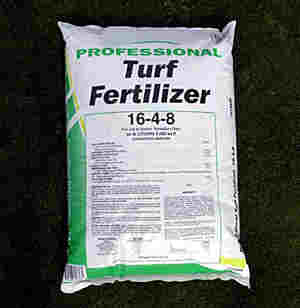Fertilization is a subject that throws many a gardener for a loop. It can be confusing, and we in the professional horticulture world understand. This topic will almost always be approached from the prospective of nitrogen. So why does nitrogen get so much attention? What is its role in plant growth? Nitrogen is the primary driver of protein synthesis, plant metabolism, energy creation, and is the structural component in chlorophyll. These are all extremely important functions leaving little doubt as to why it’s so critical. Your plants use this resource abundantly for healthy growth. The reason it gets so much attention is owing to its frangibility in the soil. Nitrogen goes through changes once applied to soils and is readily lost to the environment. For this reason, nitrogen application needs to be timed appropriately, and your cultural practices need to be such that encourage plant uptake over losses to the environment. Fear not my friends, this article will bolster your insight into the wonderful world of nitrogen, and have your plants growing strong and healthy.
The What and Why of Nitrogen
Nitrogen is one of three macronutrients identified in every fertilizer bag as the first of three numbers. This standardized NPK labeling refers to the amount of this nutrient in the bag by percentage of total weight. Application rates should be based on this number, and how much nitrogen you’ll need to cover a specified area. which number you use is based on the equipment you have to apply more so than the plant requirements.

Nitrogen can be natural or man made. Natural sources come in the form of composts, manures, and through atmospheric deposition. The later of these sources means rain, which washes nitrogen out of the atmosphere and into your soils. Man made sources conversely come in bags and are the result of a combustion process developed by Fritz Haber, and Carl Bosch circa 1910. Either way, nitrogen will be in the form of ammonia, nitrate, ammonium, or urea. Knowing this is important as it will dictate application methodologies. For instance, urea applied to the surface will escape into the atmosphere if not incorporated into your garden.

Nitrogen type will also affect soil pH. This is especially important with ammonia-based fertilizers as residual acidity from them may lower pH. Applying the correct type will mitigate large unwanted changes in soil. Why are we concerned with soil pH? It speaks to nutrient availability and, thus how well your plants grow. It can be overwhelming, but with soil testing and a call to your extension office, it’s easy to identify the appropriate fertilizers for your application.
Reactions in Soils
Soil is often considered inert, holding plants in place while providing a pantry full of the nutrients they crave. Nothing is further from the truth. Soil is a living entity with its own physical and chemical properties. The addition of anything, including irrigation, affects these properties.
Nitrogen takes two forms in your soil aside from nitrogen source. Inorganic nitrogen is converted from soil organic matter in a process known as mineralization or added from bagged fertilizers and is available for plant uptake. Organic nitrogen is unavailable for plant uptake and will be present in the natural forms listed in the previous section. Both are susceptible to the nitrogen cycle and may be lost to the environment. This happens as water passes through soil (leaching), erosion, runoff, or is lost to the atmosphere through volatilization and may have negative effects on surrounding water bodies.

To mitigate these risks through responsible fertilizer application, irrigation management, and landscape design. Apply fertilizers when plant uptake is favorable, and only to the level required by your plants. This will be during heavy vegetative growth periods such as initial installation. Irrigate as dictated by your plant life vs on a timer. Watering is a vital practice, but often overdone. Keep water levels enough to avoid plant stress but not excessive. Doing so reduces leaching potential and will keep your plants healthier. Finally, design your landscape with Florida Friendly Landscaping principles. Integrate diverse plant life, including turfgrasses and landscaped beds. The goal here is to allow enough plant life to absorb excess storm water, and support local pollinator populations.
Nitrogen is a critical piece of your fertilizer routine. It’s important to understand how it reacts with both your plants and your soils. A little knowledge can go a long way to keeping your plants healthy while mitigating risks from over fertilization. For more information, see this Ask IFAS document, or contact your local extension agent for additional information on this and any topic regarding your gardens and more.
- Consider Chestnuts for Your Landscape - December 26, 2025
- Cold Protection for North Florida - November 6, 2025
- Planning and Planting for Wildlife - October 10, 2025
